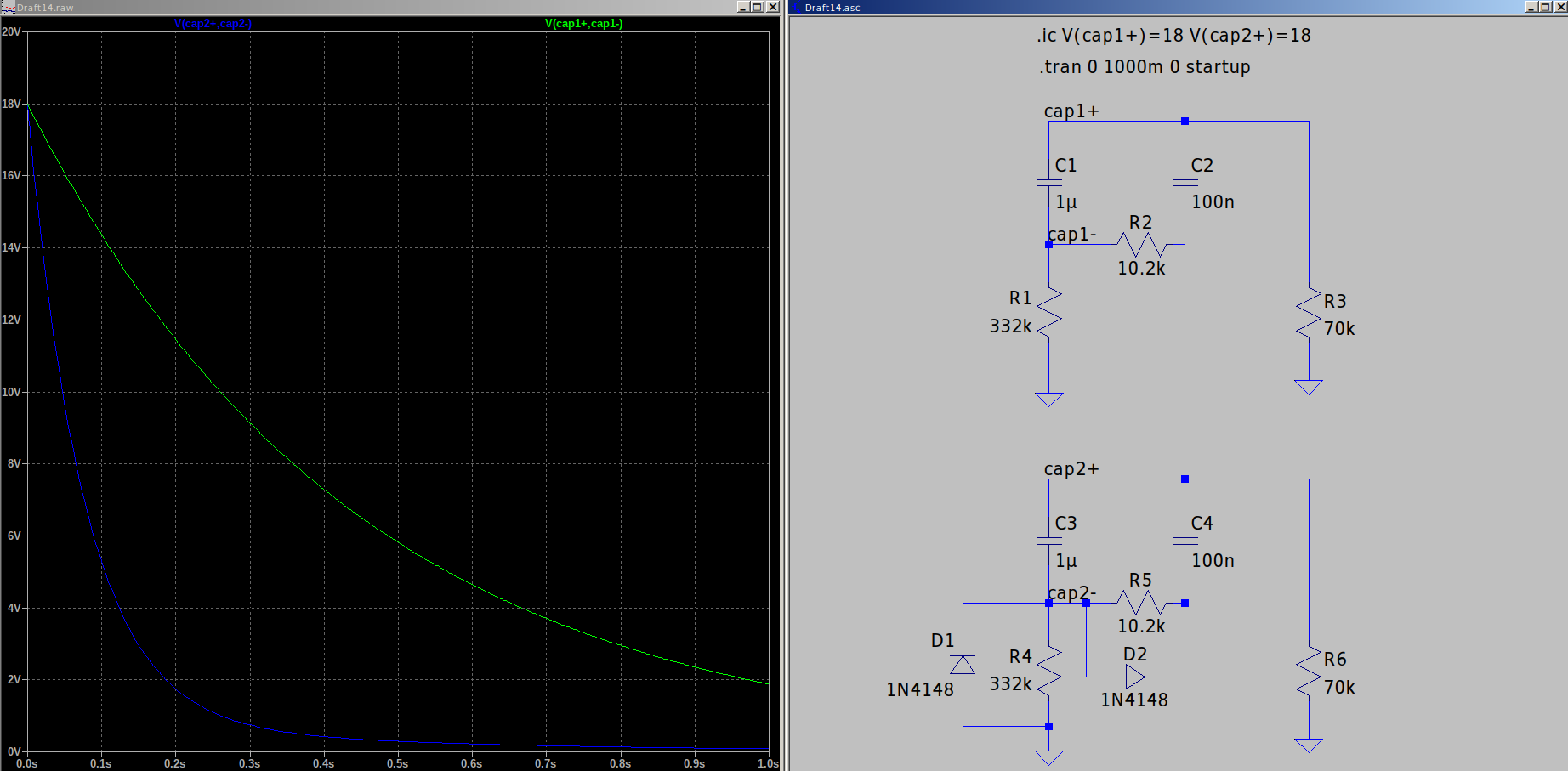I am reading this App Note. On page 6, Figure 5, they have provided a circuit which helps with the soft start and input protection circuitry.
I am not able to understand the "Capacitor Reset" block on the bottom right. They have mentioned that when there is a power disconnection, the capacitor reset blocks helps to reset the RC time constants of the 1uF and 332k resistor & the 0.1uF and the 10.2K resistor.
I am not able to understand as to how the current or the charge from the capacitor will flow to the ground through those diodes. Can someone help me with the capacitor voltage polarities and the direction of the current flow of those 2 RC sections during that power disconnection?
I have seen diodes placed in parallel to the resistors on microcontroller circuits so that when a power cycle happens, the capacitor is discharged through the diode instead of the resistor so as to provide an indication that there was a power interruption. But I am not able to understand the current flow over here.
Please help to understand.








